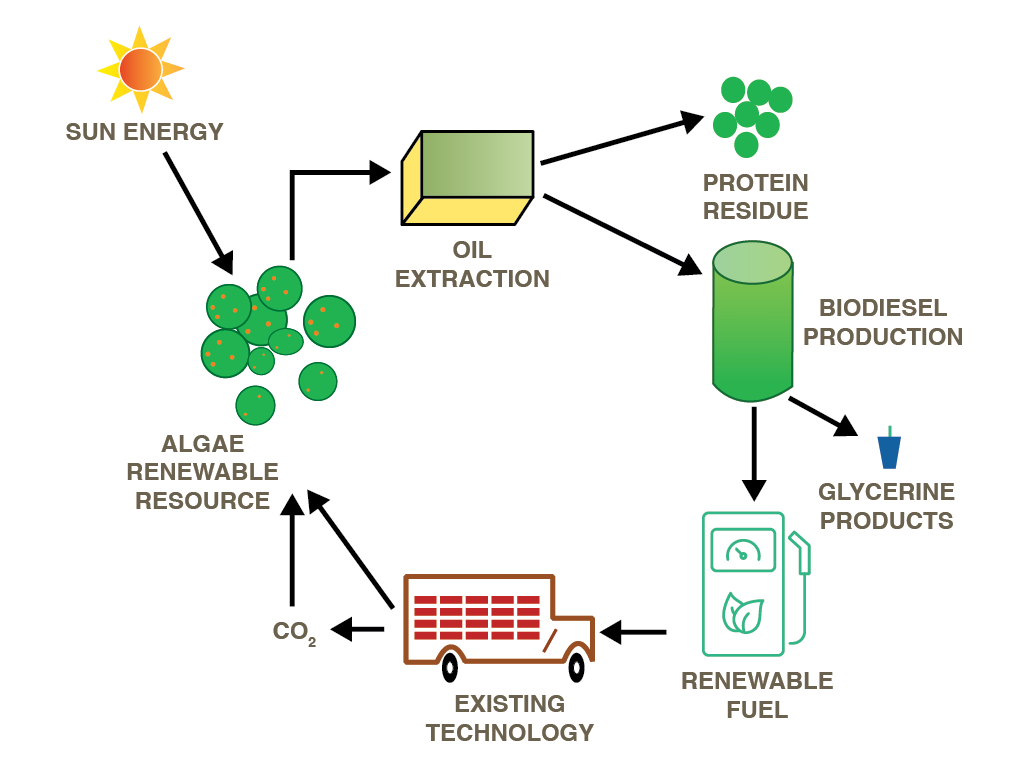-
Remove
-
Recycle
-
Reuse
-
Reduce
-
Biomass (Algae cultivation)Algae biomass or Algae fuel is an alternative energy source that is rich with various oils and can be used as a substitute for liquid fossil fuels. Algae fuels are also an alternative to commonly known biofuel sources that include corn and sugarcane. One of the intriguing characteristics of Algae biomass…RemoveReduce
Algae biomass or Algae fuel is an alternative energy source that is rich with various oils and can be used as a substitute for liquid fossil fuels. Algae fuels are also an alternative to commonly known biofuel sources that include corn and sugarcane. One of the intriguing characteristics of Algae biomass is that it can be integrated with the treatments of industrial, municipal, and agricultural wastewaters. Through industrial processes Algae biomass can capture carbon from flue gases as well as from wood-burning power plants and industrial operations while simultaneously produce alternative fuels (Biogasoline, Jet Fuel, Ethanol and Biodiesel) that are cost effective, carbon-neutral, efficient and can be utilized in cars, electrification & power, heavy duty machinery, ships and industrial sectors.
- Algae Biomass is produced via a series of steps. First Algae is harvested through the availability of Sunlight, Carbon dioxide and nutrients. Post harvesting, Algae is then placed in a controlled environment and either one of the two processes will be applied: Transesterification or Hydrothermal Liquefaction. When one of these processes are conducted with the presence of algal lipids and methanol, it results in the production of 50% fuel and 50% biomass. Species of Algae can help produce hydrogen gas under specialized growth conditions. It could generate Methane biogas via anaerobic digestion for heat and electricity purposes. And lastly Algae biomass can be treated by pyrolysis to generate crude bio-oil.
- What are the main advantages of Algae biomass? Algae is easy to grow due to its minimum requirements of attention and resources. Its extraction can produce fuel and sufficient animal feed. It can reduce waste significantly by preventing the contamination of drinking water from mixing with fertilizers in lakes and rivers. And finally, Algae consumes ammonia, nitride and phosphate as nutrients as well as it consumes carbon dioxide as a form energy.
 More informationWhere is it deployed?
More informationWhere is it deployed?